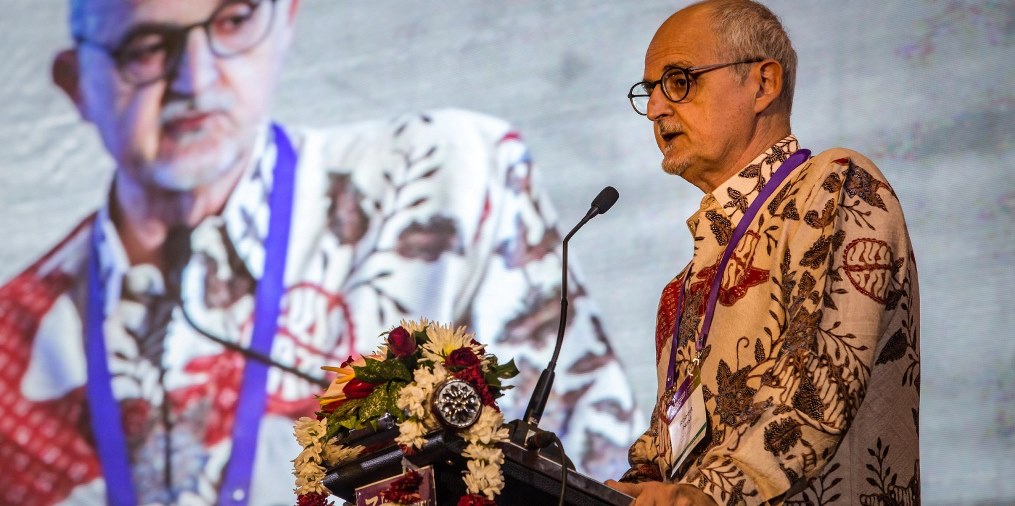Land tenure security for the indigenous and traditional communities that are often the stewards of forests and natural landscapes is vital for ecological restoration.
That message was clear at the recent World Bank Conference on Poverty and Land session on climate change, forest landscape restoration and tenure: “Catalyzing restoration from below and above.”
“I think we are in FLR a bit like we were in REDD a few years ago,” said CIFOR General Director Robert Nasi, who chaired the session.
“You will remember that REDD was first RED, Reduced Emissions from Deforestation. Then it became REDD, Reduced Emissions from Deforestation and Forest Degradation. Then it became REDD plus. I think we are at the stage in FLR where we probably need FLR plus,” he explained.
As experiences in different countries have shown, he added, “without solving the problem of tenure, it is very unlikely that any restoration exercise will be successful. “You bring back the land in a situation that it was before being degraded, but you don’t solve the issue of why it was degraded originally,” Nasi added.
Getting formal title of rights to land or recognition of rights to collective lands, however, is a fraught process in many countries.
According to Peter Veit, director of the land and resource rights initiative at the World Resources Institute (WRI), one recent study showed that 45 out of 100 countries have weak, very weak, or no provisions at all on protecting community land rights. “At the same time,” he said, “we know that global demand for land is threatening community land, especially if community land that is not recognized and not documented..”
WRI worked with six other organizations to compare what it was like in 15 different countries for communities to apply for land rights compared to what a company had to do. They found that, for communities, it could take anywhere from one year to 30 years to get formal tenure, while for companies, the process lasted anywhere to one month to five years.
“Many of the steps that companies have to go through are associated with their operations and have nothing to do with the land acquisition process,” said Veit. “In practice, we know that many companies skip steps and begin their operations before the process of actually acquiring those formal land rights are completed.”
For rural and forest dwelling communities, however, the process is extremely onerous. In some countries, such as Peru, communities are asked to comply with burdensome and costly legal requirements, such as providing soil samples. In the Philippines, the process requires 56 legally mandated steps, while in Uganda, communities must seek approval from institutions that have yet to even be established in a number of districts.
“So there are huge challenges here for communities,” Veit said. “Most disturbing from my perspective,” he continued, “is that formalization often requires communities to sacrifice some of their traditional land, and some of their traditional rights. And those rights and those lands are often significant.”
That leaves communities with a very difficult decision to make. Tenure legalization often excludes common property on community land such as forest, wetlands and pastures, which are considered unoccupied. “In fact,” he said, “many communities have done this cost-benefit analysis and said ‘no.’”
Yet research shows that the members of rural and forest communities are much more likely to engage with initiatives that they agree with, that enhance wellbeing through material and other benefits, and that don’t cause them harm. As a result, the outcomes of such initiatives are more sustainable than those that focus only on carbon sequestration.
For Anne Larson, team leader, equal opportunities, gender justice, and tenure at CIFOR, Forest Landscape Restoration initiatives need to go beyond instrumentation and “do-no-harm” perspectives to take on broader goals. Promoting gender equity and enhancing women’s rights is one such goal. “Women are land managers and have different knowledge and use land differently than men do,” she said.
“They have insights into different aspects and drivers of degradation and of the potential benefits of ecosystem recovery. So leaving them out of solutions means that we are missing out on input from half of the population, from having more complete knowledge of the problem, and twice as many sustainable solutions and twice as many people working for the kinds of changes we need to see for the future health of our planet,” Larson added.
But previous initiatives have failed to include women, she said, and “assumed that male household heads reflect the interests and needs of their wives. They failed to provide compensation in ways preferred by women, which were different than men’s preferences, and they have benefited men while harming women. A common problem in FLR initiatives that I see across the literature specifically appears to be increasing women’s workload.”
Change is needed, she added, and FLR has huge potential to be part of building an environment for change “through safeguarding women’s rights and ensuring that women’s views and priorities are fully understood and reflected in restoration planning and implementation.”
“We may need to look at a more ‘people-centric’ approach to restoration,” said Nasi in summing up the session and discussions. “If I have one conclusion it is that, clearly, land tenure and tenure rights – and not simply giving them but giving people the capacity to exercise these rights – is very important,” he said. “It’s not a guarantee that the land will necessarily be better managed, but not giving it is a guarantee that the land will be degraded and our restoration effort will fail.”
Photo of Robert Nasi courtesy of CIFOR.
This article by Augusta Dwyer originally appeared on CIFOR’s Forests News website. Reprinted by permission (with minor edits).

